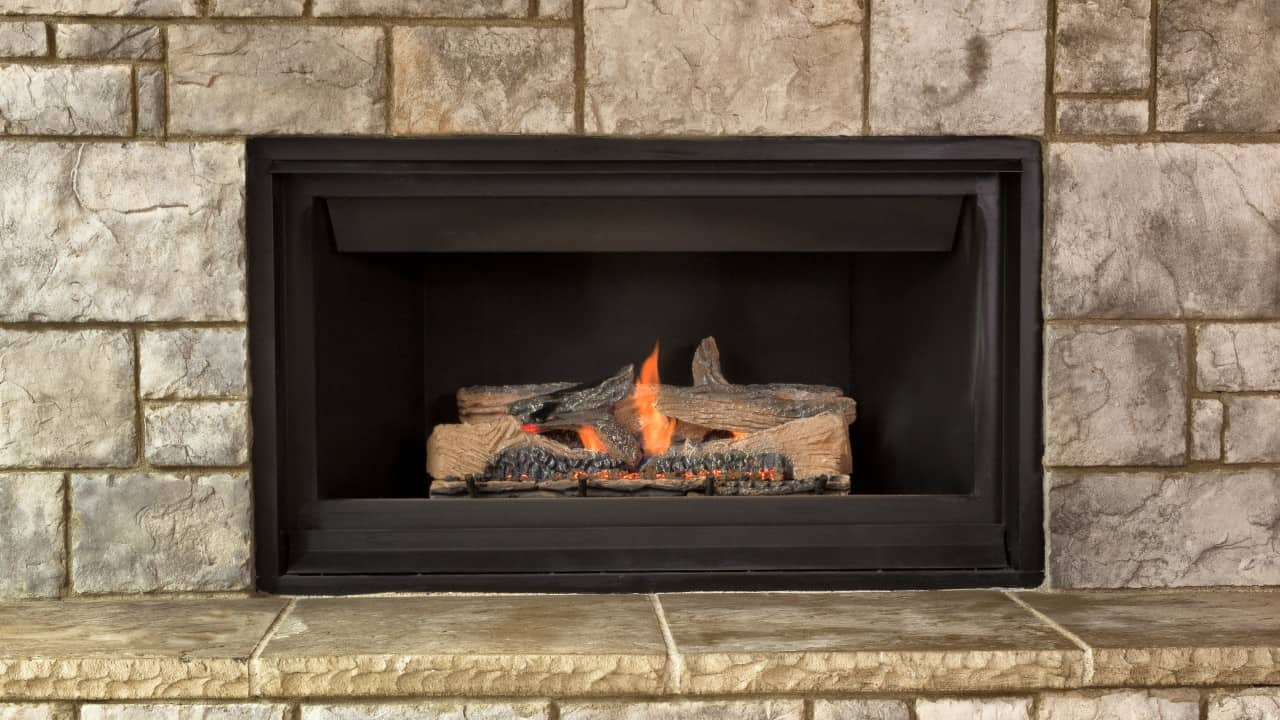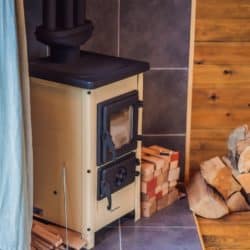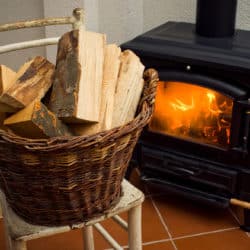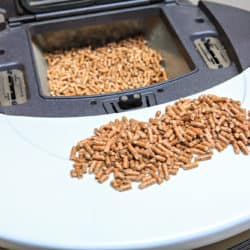There’s nothing as cozy as spending time next to a wood-burning fireplace on a rainy or chilly night.
However, not everyone owns a wood-burning fireplace – some homeowners use gas fireplaces, and these are also capable of producing that well-known and much-loved warm glow. However, there are a few important differences between these and other kinds of fireplaces.
And when it comes to gas fireplaces, it is crucial to get familiar with all the safety procedures related to these appliances. The most commonly asked question concerning gas fireplaces is – “should I open the flue on it?”
After hours of thorough research, I have determined that this component of your gas fireplace should stay open every time you’re using this appliance or whenever its pilot light is shining. Keeping the gas fireplace flue closed in either of these two situations is not recommended, as it poses risk to your safety.
It can lead to a gas build-up, i.e. an increased amount of toxic gas produced by the propane or natural gas burners. Creating carbon monoxide, this kind of situation can lead to carbon monoxide poisoning. There is also the risk of a spark-induced structure fire.
To put it simply, the only time when you should close the flue on your gas fireplace is when you’re not planning to use it for quite some time. It is safe to close the flue if the summer months are approaching and there’s no need to turn the fireplace on until the autumn.
Now that you know why it’s so important for the gas fireplace flue to remain open, maybe you’re wondering how to operate it and where is this flue located?
If that’s the case, keep reading – I’ll be taking a closer look at how the gas fireplace flue and flue damper function and tell you everything you need to know about these vital components.
Contents
What is Actually a Gas Fireplace Flue?
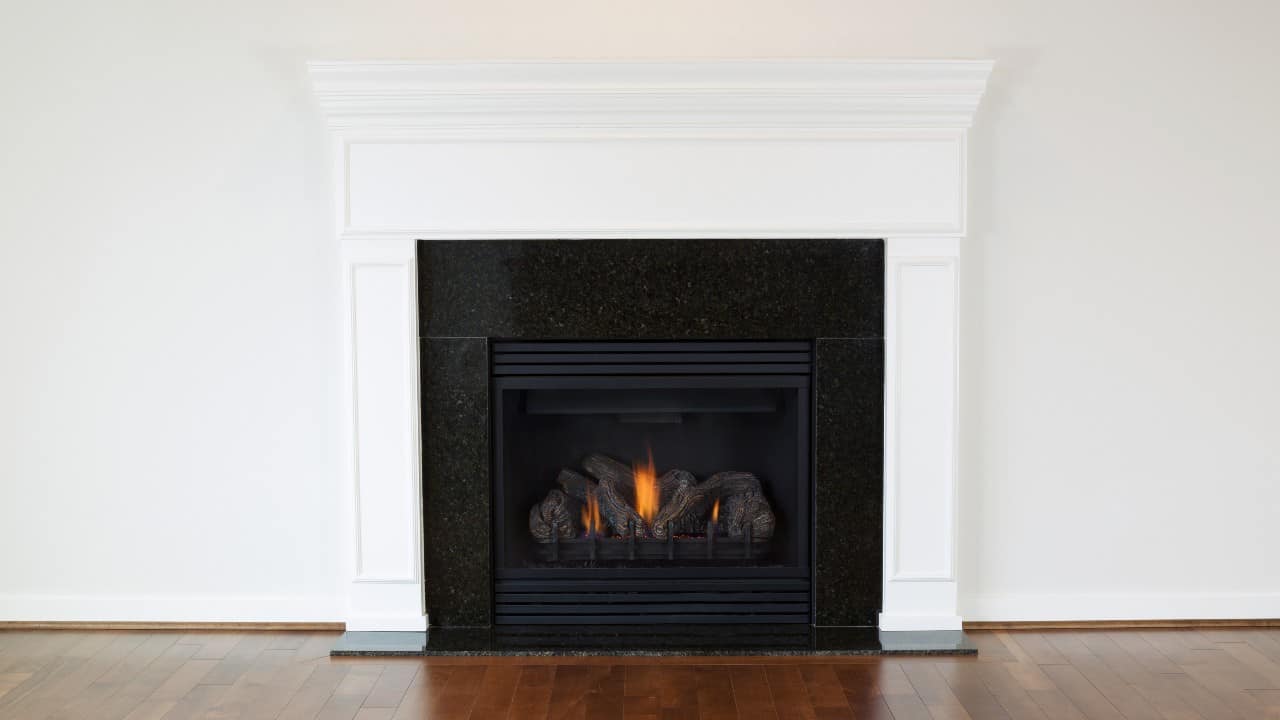
A gas fireplace is made up of numerous components, one of which is the flue. Basically, this is a pipe, ductwork, or a chimney that allows gas to escape without making the fireplace itself lose its heat.
Inside the flue, one can find the flue damper, which typically looks like a simple metal flap. To keep the flue damper shut or open – and, in that way, control how much smoke is going to escape through the chimney – one has to use the flue damper handle, which looks like a long and thin piece of metal and which has a hole drilled on its end.
How Do I Open and Close a Fireplace Flue?
It’s very important to check whether this flue is open before turning on the installed gas logs. You should be doing this for your own safety – if you try to adjust the fireplace damper once the gas logs are already ignited, you’ll be risking burning yourself.
The damper lever (or handle, depending on what kind of gas log set you’re using) is almost always clearly marked to show whether it’s in the opened or closed position. If not, you will most likely have to pull it towards you to close the flue and push it away from you to open it.
Is There a Flue on Every Gas Fireplace?
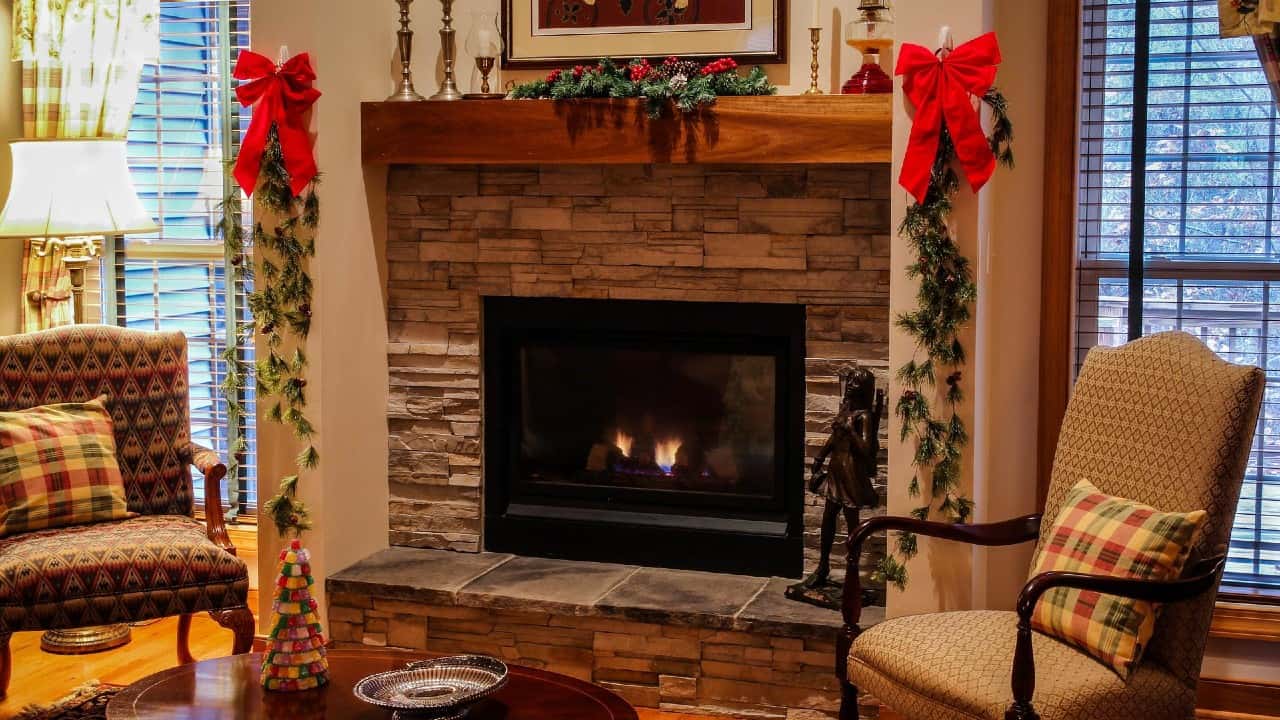
Due to the fact that not all gas fireplaces are the same, not every single one of these appliances comes with a flue. They can be separated into two main categories: vented gas fireplaces and ventless gas fireplaces (also known as vent-free fireplaces).
To be safely installed in one’s home, a ventilated gas fireplace needs to have some form of a flue. A vented gas fireplace can be either a natural vent or a direct vent fireplace.
- Natural vent fireplaces are typically placed inside masonry fireplaces, where they remove room air via the fireplace chimney. Whether this chimney will be equipped with a chimney flue liner often depends on the local requirements.
- Direct vent gas fireplaces, on the other hand, are typically sealed systems that involve both the waste air (which goes to the outdoors) and the air required for combustion (keep in mind that an improperly maintained appliance of this type can result in incomplete combustion, which, in turn, can lead to carbon monoxide poisoning). This kind of gas fireplace cannot function without a flue.
Inside ventless (or vent-free) fireplaces, the fuel is burning strongly and cleanly – it’s an ideal appliance for indoor use. Unlike a vented fireplace, which produces smoke (as well as a more realistic yellow flame) as the result of burning vented gas logs, a vent-free fireplace creates no smoke and doesn’t require a flue.
When Should I Close the Flue on My Gas Fireplace?
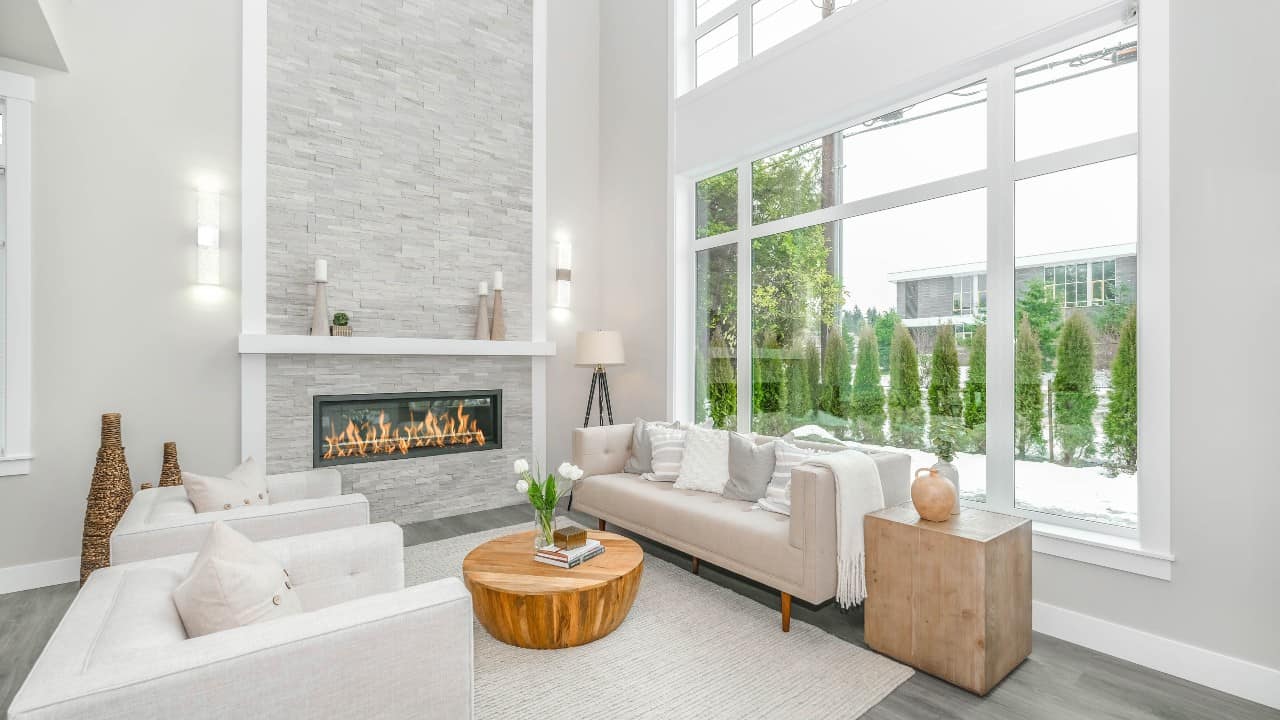
In general, one should never close the flue while this appliance is in operation. And even if the fireplace is not currently in operation but its pilot light is shining, you should still not close its flue.
The reason behind this is very simple – the fireplace can emit dangerous levels of carbon monoxide as long as it has access to the fuel source, be it vented logs or vent-free gas logs.
As you already know, gas fire produces quite a bit of carbon monoxide, and it’s very important for this flammable gas to be discharged to the outside in a fail-safe manner. If it’s not properly vented, it can lead to the aforementioned poisoning and even death.
This is why it’s very important for your fireplace damper to have a keep-open device attached to it.
With all of that said, the only situation in which you should keep the flue closed is when you’re not planning to use your gas log fireplace for quite some time – like during the summer.
Frequently Asked Questions
How Do I Determine Whether My Fireplace is Ventless?
Have a good look at your gas line, which should be going from the gas logs to the floor or the wall.
Is there a small cylinder attached to it? If that’s the case, your fireplace is using vented logs. If there’s nothing else besides a simple gas line, your fireplace is using vent-free logs.
Should I Close the Glass Door on My Fireplace?
The glass doors, found one some gas log fireplaces, should always be fully closed or fully open.
In order to minimize the amount of air going up the chimney, this door needs to be closed as the fire dies. On the other hand, it needs to be open whenever the fire is burning strongly and whenever you’re starting a fire.
Is Having a Chimney Required for a Natural Gas Fireplace?
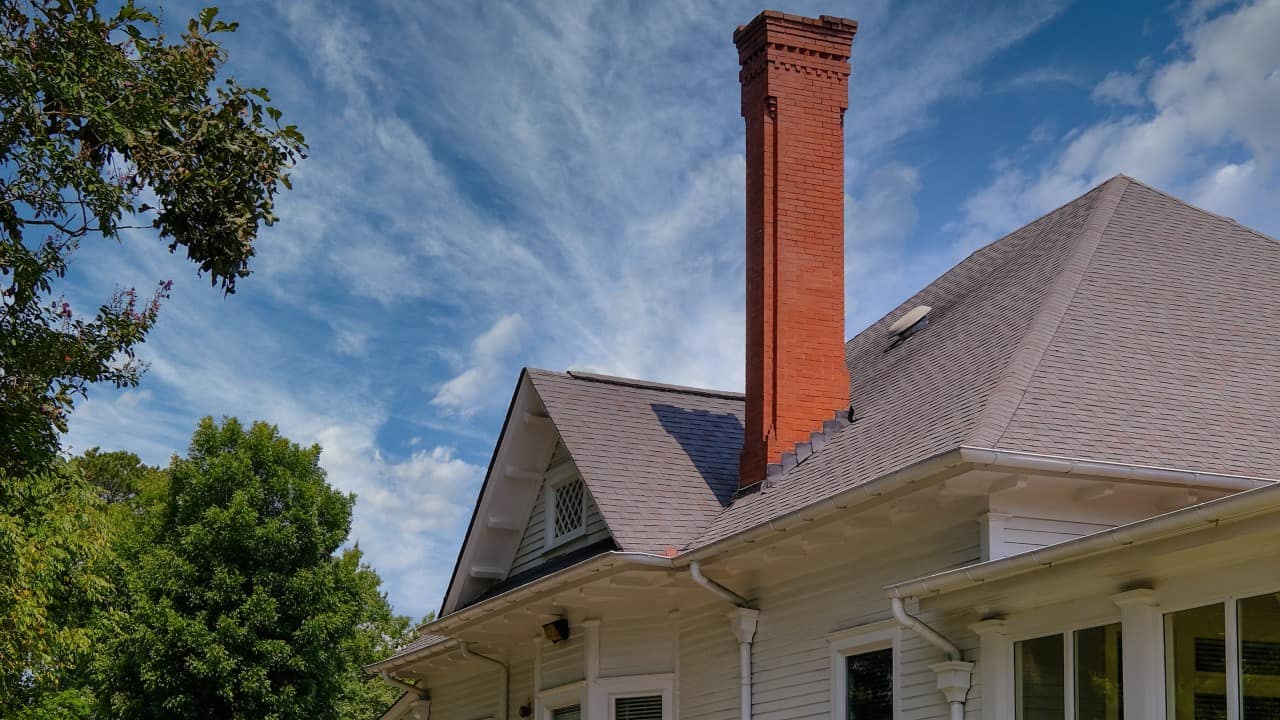
A lot of the vent-free appliances of this type don’t need chimneys. However, if you’re planning to use a vented gas log set, you will need a chimney – its job is to disperse the combustion byproducts and the heat generated by burning.
Many sets of gas logs can be used only in those chimney systems that were installed properly and which are adequately maintained.
Wood-Burning Fireplace vs. Gas Fireplace – What’s Better?
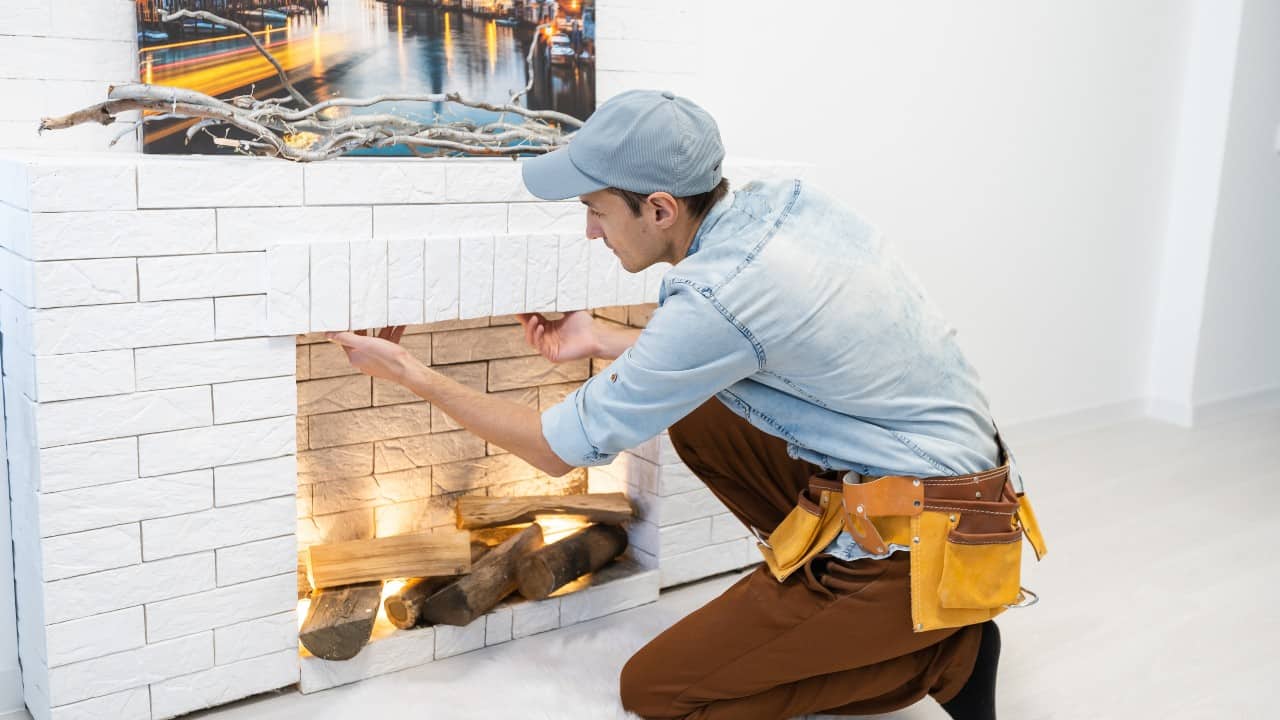
A real wood fire has its charm and is more energy-efficient, although this depends on how you look at it: gas fireplaces literally run on gas and electricity, while the wood-burning fireplaces use just wood and nothing else, although that comes with its own expenses as well.
However, gas-operated fireplaces are more efficient in general – after all, gas logs burn cleanly and, in the case of vent-free gas logs, don’t produce smoke at all. Also, gas log fires imitate the look of a real wood fire quite well.
How Many Hours Can I Run a Gas-Operated Fireplace?
When it comes to fireplaces that use vent-free logs, the longest you should leave one in operation is three hours. Those using vented gas logs will be pleased to know that they can keep their fireplaces running continuously as long as they keep the glass panes closed.
The Takeaway
When compared to conventional fireplaces, gas-operated fireplaces are easier to maintain and excel in terms of efficiency – they’re a fantastic addition to any home.
However, to ensure the safety of your family and your home, as well as the longevity of this appliance, it is very important to learn how to operate it in a safe and responsible manner, whether it’s using vent-free or vented gas logs.
Hopefully, this article has helped you in learning everything you need to know about different kinds of gas-operated fireplaces and why it is important to keep their flues open as long as they’re in operation or their pilot light is on.
